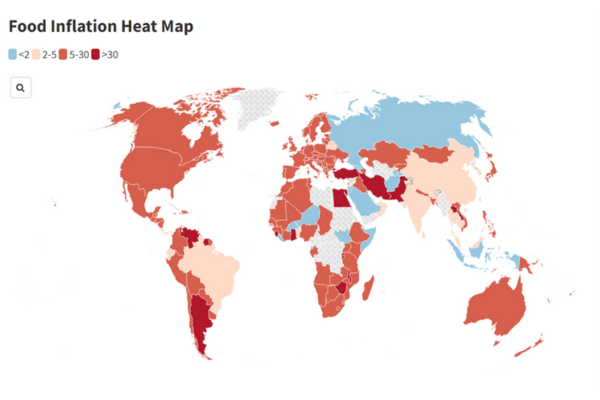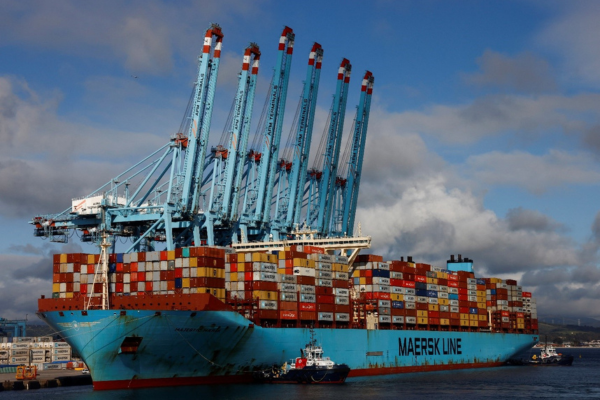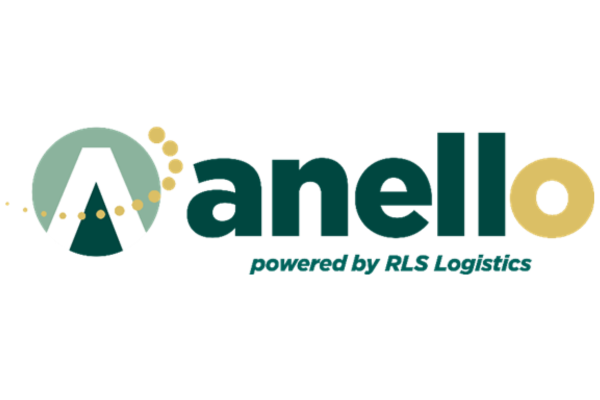Frozen and Refrigerated Cold Chain Insights
Welcome to The Cold Front, presented by RLS Logistics, the Cold Chain Experts! We proudly offer nationwide cold storage warehousing, ltl shipping, truckload freight brokerage, and eCommerce fulfillment cold chain solutions. This month’s edition focuses on these topics for our November 2023 issue: food insecurity, transportation, end-of-year outlook, and technology. The Cold Front is a monthly summary highlighting pertinent cold chain storage market data in one concise location. These insights ensure that you have the data to make better decisions to fuel your growth. We hope you find this information useful! If you want data on your specific market, click the button below.
Food Insecurity
Last week, we had the privilege of sponsoring and attending the Food Bank of South Jersey’s annual gala. Besides highlighting all the wonderful work and the mission of the Food Bank of South Jersey, we learned that food insecurity is on the rise in the United States of America. The USDA’s Household Food Security in the United States report was released on October 25th, providing an alarming increase in national food insecurity. You can download and review the report here.
The new data revealed that in 2022, there are 17 million households that are food insecure, an increase of about 26% from the previous year. The report also showed that food insecurity for households with children has increased to 3.3 million households, a 44% increase from the previous year.
Although many factors lead to food insecurity, rising fuel prices have to be at the top of the list. Generally, food prices increase 2% on average year over year. However, last year, we witnessed a staggering 11% increase from 2021. Although prices have retreated in 2023, they are still high, and experts calculated a 5% increase for 2023. Food security is important for many reasons, including but not limited to alleviating poverty, public health, sustainability, productivity, and humanitarian causes. Combating food insecurity is not only a moral imperative but also a strategic investment in the future of our country. Please consider doing your part to help combat food insecurity by supporting and donating to your local food bank or pantry; we will continue to do ours.
2023 Transportation Year End Outlook
The transportation market continues to make headlines. According to a recent Freightwaves article, through their Sonar data, the transportation market bottomed out in May 2023 and has been slowly recovering. One of the metrics discussed in the article was the outbound tender rejection index (OTRI). This index tracks the percentage of truckload shipments rejected by the primary carrier. OTRI essentially represents the transportation market supply of trucks and the demand for freight. When we see the index increase, it signals that trucks are rejecting contracted freight because there are more available and higher paying loads.
Currently, the OTRI is like 2019, which saw an increase in tender rejections in November and December due to a holiday spike. However, the OTRI remained flat last year, signaling a weak holiday freight market. If we witness higher tender rejections in December, freight rates may spike, although we predict it will be short lived as the overall freight demand is weak and is expected to remain weak well into 2024.
In a recent announcement, A.P. Moller-Maersk announced that it will be shedding 10,000 jobs driven by a steep drop in third quarter revenue and profit. In addition to the overcapacity of trucks in the market, there is also overcapacity in container ships. A large amount of new container ships ordered due to strong demand during the pandemic are now hitting the water, creating an imbalance of supply with weak demand, which will negatively impact the container shipping market in 2024. Importers and exporters should see shipping prices come back in line with historical levels, which will be a relief from rates paid during the pandemic.
Technology
In a recent article by TechTarget, the adoption of digital technologies such as advanced analytics for better visibility and flexibility leads the list of top priorities for supply chain professionals in 2024. The supply chain has become very unpredictable over the past few years, and it is expected to continue to be hard to predict. This means that organizations will have to rely on technology and data to help drive results. Digitalization is more prevalent in the supply chain because organizations are seeing more and more pressure to provide supply chain visibility and be more accountable for their environmental sustainability. Unfortunately, there is a gap in some organizations’ ability to provide the technology needed to make data accessible. The need to partner with a supplier who understands the importance of data and has the breadth to implement digital data for their customers is paramount. Technology competence is something we identified early here at RLS Logistics, which is why we started the programming for anello, our customer portal. We urge all our customers to register for anello, and our team of cold chain experts can walk you through its functionality. Data drives results.




